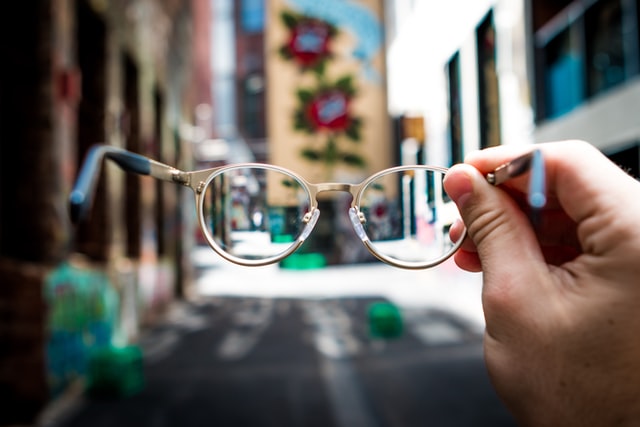“Where you sit determines what you see,” says Sheila Heen in a recent conversation with Tim Ferriss on his eponymous podcast.
Together they unpack some truly novel and insightful strategies on how best to handle tough conversations; Heen’s specialty after multiple books on the subject.
In the podcast episode, she recounts a story that really struck a chord. Years ago when her son was around three years old, they were stopped at a traffic light with her in the driver’s seat and him strapped into a carseat in the back.
They were working on colors as well as traffic safety, so casually she asked him what color the light shone. “Green,” he responded as they sat stopped at the redlight. “Ben,” she tried again. “We’re stopped at the light. What color is it?” Again, he responds “Green.” And when it turns, he says, “It’s red. Let’s go.”
His response took her aback. She said that by all other measures, her son was a bright kid. Why was he struggling with the light?
She immediately went into problem-solving mode. Her first hypothesis was that he must be color blind. She began testing the theory calling out other red and green items. But every other time, he named them correctly.
Her second hypothesis was that her child was simply messing with her, which would not have been out of character.
The whole ordeal went on for a few weeks, until a set of circumstances led her to be seated in the backseat of her car next to Ben with her husband driving and mother-in-law in the passenger seat.
Suddenly she realized that from the backseat, where her son was sitting, he couldn’t see out the front windshield. He could only see out the window next to him at the cross traffic light.

Thinking back to the earlier ordeal, from his perspective, she was the one who was wrong. His mother always seemed to be right in other regards, but in this one strange circumstance, Mom was perpetually claiming the light to be the wrong color.
I find this whole story to be extremely powerful in so many ways; a perfect example of two well-meaning people who were both right and both wrong at exactly the same time. But as we later learn, the perspective from which they were sitting led them to two very different conclusions.
“Where you sit determines what you see.” In this case that axiom was literal, not metaphorical.
Think back to a recent difficult conversation with a spouse, friend or partner. Maybe one of you was pushing to stick to previously made plans, while the other was encouraging that they be broken, “for good reason.”

Maybe you were determined that your partner was wrong while you were “obviously” right. And maybe that was actually the case. But as we just learned from Sheila, Ben and the traffic light, maybe your partner also was right and you also were wrong. Where you sit often has a bigger impact than initially expected.
Maybe your boss, looking down from her 10,000 foot view, suggests you spend less time focusing on Client X so that you could focus more on Clients A, B and C. But from your in-the-weeds vantage-point, Client X has more upside than A, B, and C combined. Maybe you’re on the reverse end of the story and assume that your employee is poorly allocating her or his time.
In cases like all of the above—traffic light, spouse and employee/boss—Heen suggests we pause and instead of assuming “I’m right and you’re an idiot,” ask the other person for help. Say something like, “To me, this doesn’t make any sense. From my seat, I see it like this. Help me to understand what you’re looking at.”

“Help me to understand what you’re looking at” opens up a dialogue. It’s non-confrontational and it’s productive.
Heen also brings it up in the context of race relations or gender norms. Think about the seat of a young white man when compared to an older black woman. They are two people in different seats who see different things—who have experienced different things.
So the next time that you’re at odds with someone in a context where coming to an agreement is beneficial for everyone, think back to Sheila, Ben, and the traffic light. Switch seats with the other person. See for a moment from each other’s eyes. You might just be amazed with the fresh perspective and how much more you’re able to accomplish.

If you want to dig deeper, Sheila Heen is co-author of the New York Times bestsellers Difficult Conversations: How to Discuss What Matters Most and Thanks for the Feedback: The Science and Art of Receiving Feedback Well (even when it’s off base, unfair, poorly delivered, and, frankly, you’re not in the mood).
She has written for publications like the Harvard Business Review and The New York Times and has appeared on NPR, CNBC’s Power Lunch, and Oprah. She has also spoken at the Global Leadership Summit, the Nordic Business Forum, the Smithsonian, and for companies like Apple, Google, and Microsoft.
Being a better partner is hugely critical both in sales and life. Being able to see things through another person’s eyes is a key part of that process, and where you sit can impact the possibility for success. Learn more about being a better salesperson without being a pushy sleaze ball in my series of posts entitled “The Soft Sell.”

Leave a Reply